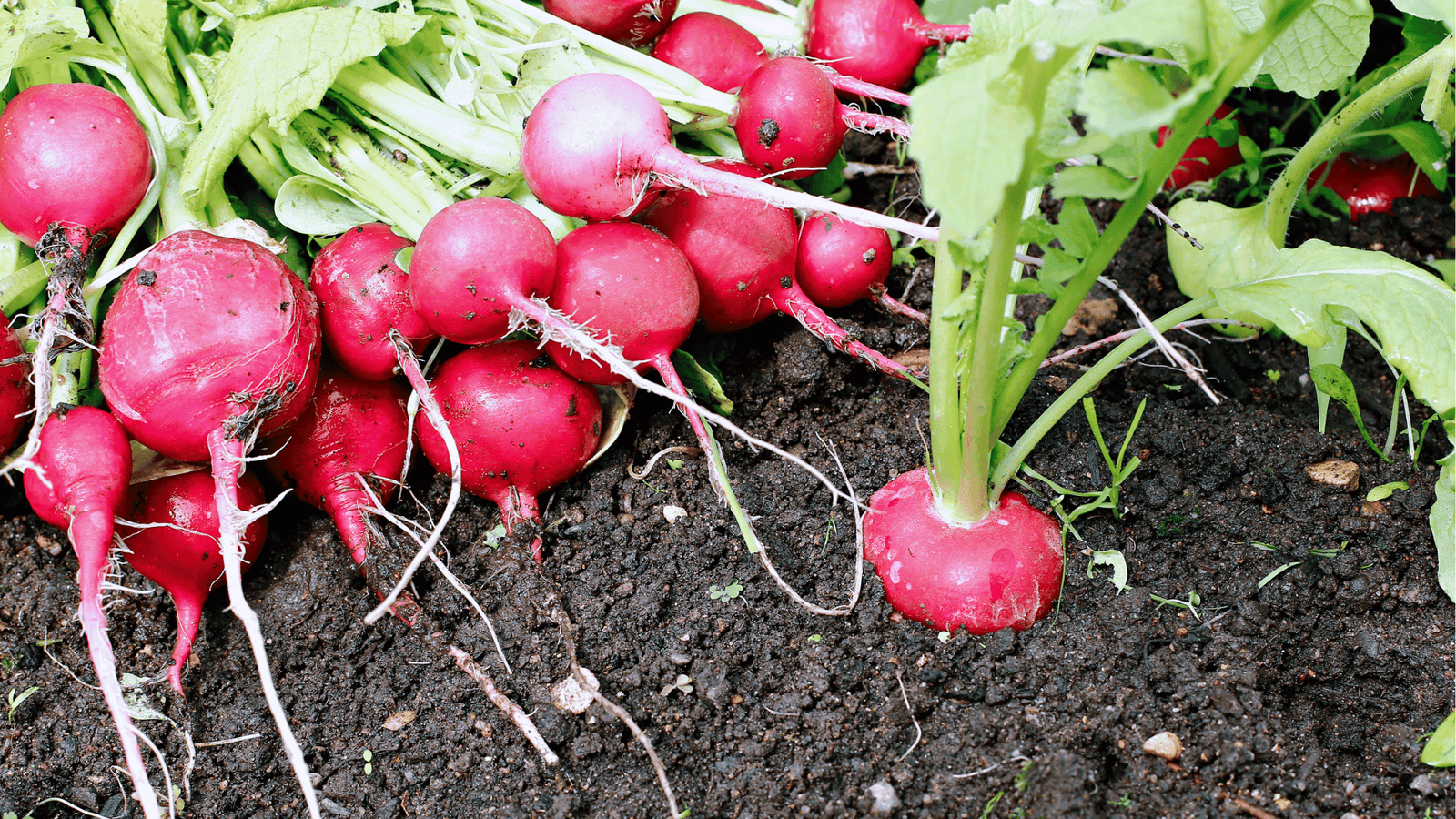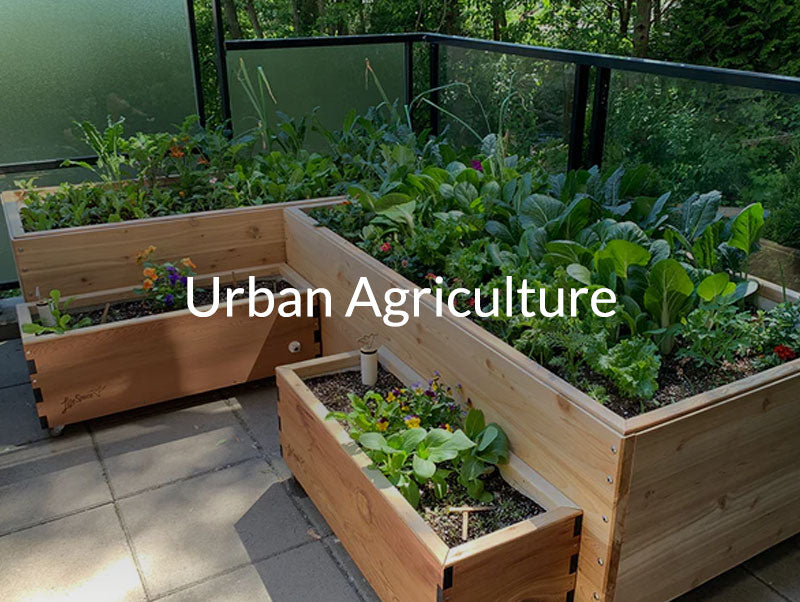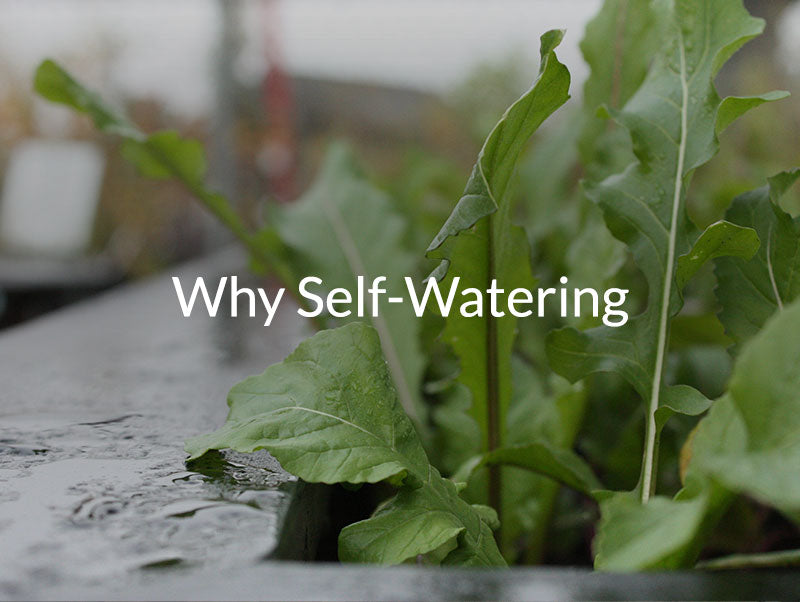Radish Growing Guide🥗: Fast Harvest Tips for Self-Watering Gardens

Introduction
Radishes are one of the fastest-growing and most rewarding vegetables you can plant. Perfect for beginners and pros alike, they thrive in SIPs and wicking beds, where steady hydration ensures tender roots and consistent flavor. Using GardenWells inserts converts any raised bed into a self-regulating wicking bed, making radish growing nearly foolproof.
When to Plant Radishes
-
Spring: Direct-seed as soon as the soil is workable, usually March through May. Check the March Gardening Guide for early sowing tips.
-
Summer: Continue planting through June using heat-tolerant varieties; see the June Gardening Guide for succession planting strategies.
-
Fall: Sow a final round in August or September for a sweet, mild autumn harvest. Visit the September Gardening Guide for fall radish timing.
Square Foot Gardening Spacing
-
Spacing: 16 radishes per square foot (~3” apart)
-
Depth: Sow seeds ½” deep
How to Plant Radishes
Direct Seeding (Preferred)
-
Sow 2–3 seeds per hole and thin to the strongest seedling after germination.
-
Keep the soil surface evenly moist until sprouts emerge (~5–7 days).
-
Stagger plantings every 2–3 weeks for continuous harvests.
Transplanting (Not Ideal)
-
Radishes dislike root disturbance, so direct seeding is best.
-
If transplanting, use deep starter plugs and handle seedlings carefully.
Watering Your Radishes
Radishes form crisp, tender roots when evenly watered:
-
Use your WaterStem: when the Hummingbird rises, the reservoir is full; when it drops, refill.
-
Before establishment: Lightly top-water daily until seedlings root into the SIP moisture zone.
-
After establishment: Refill reservoirs every 1–2 weeks depending on heat and bed size.
-
Mulch around seedlings to reduce evaporation and stabilize soil temps.
-
For spring SIP irrigation tips, visit the March Gardening Guide.
Harvesting Radishes
-
Timing: Harvest radishes 3–5 weeks after planting for crisp, mild roots.
-
Signs They’re Ready: Bulbs should be ¾–1” in diameter at the soil surface.
-
Continuous Cropping: Replant new seeds in harvested spots for rolling yields through spring and fall.
Common Issues & Fixes
| Issue | Likely Cause | Solution |
|---|---|---|
| Pithy, Woody Roots | Inconsistent watering | Maintain steady SIP hydration and mulch beds |
| Excessive Leaf Growth | Too much nitrogen | Use balanced compost and avoid over-fertilizing |
| Flea Beetle Damage | Tiny leaf holes | Use row covers or interplant with nasturtiums to deter pests |
Companion Plants for Radishes
Best companions (with cross-links):
-
Carrots → Radishes loosen soil, helping carrots thrive.
-
Lettuce → Perfect shallow-rooted partner for SIP layering.
-
Spinach → Great early-spring partner; both thrive in cool SIP conditions.
-
Cucumbers → Radishes repel cucumber beetles when interplanted.
-
Peas → Nitrogen-fixers that boost radish leaf growth naturally.
Avoid planting with:
-
Brassica-heavy zones (broccoli, cabbage, mustard greens) → Shared pests can overwhelm beds.
-
Hyssop → Known to inhibit radish growth.
Layout Tip:
-
Plant 16 radishes per sq ft in SIPs or wicking beds.
-
Use radishes as “gap fillers” between slower-growing crops like carrots or lettuce.
-
Interplant nasturtiums or marigolds for natural pest defense and pollinator appeal.
Product Tips
-
Small patios? Grow radishes in CondoFarms self-watering planters for quick, repeat harvests.
-
DIY gardeners? Use GardenWells inserts to turn any raised bed into a wicking bed.
-
Expanding production? Explore custom self-watering raised beds for maximum yields with minimal watering effort.







